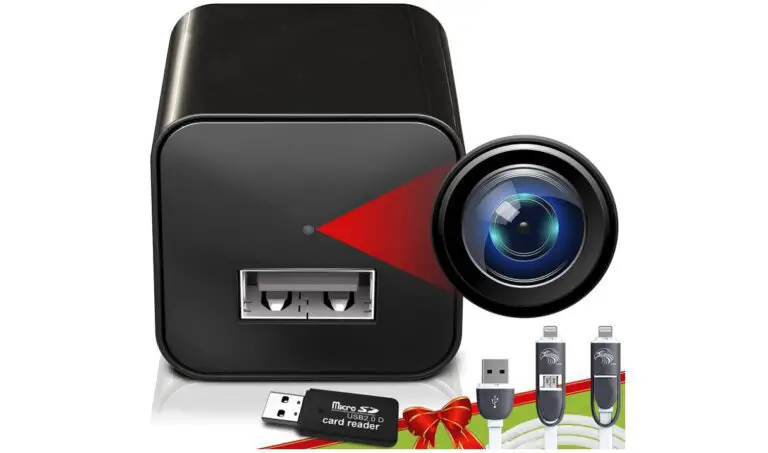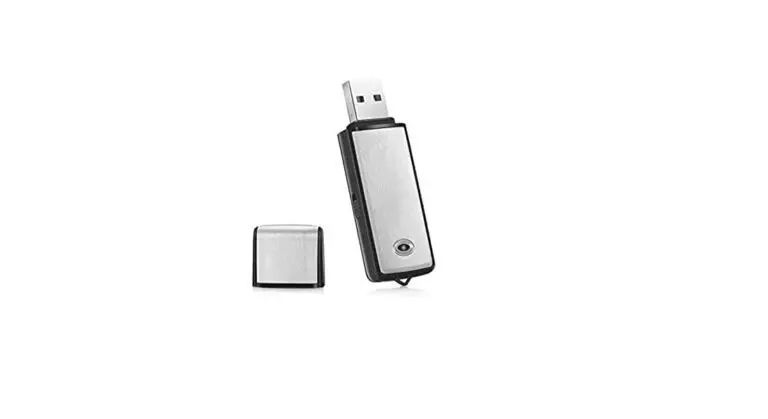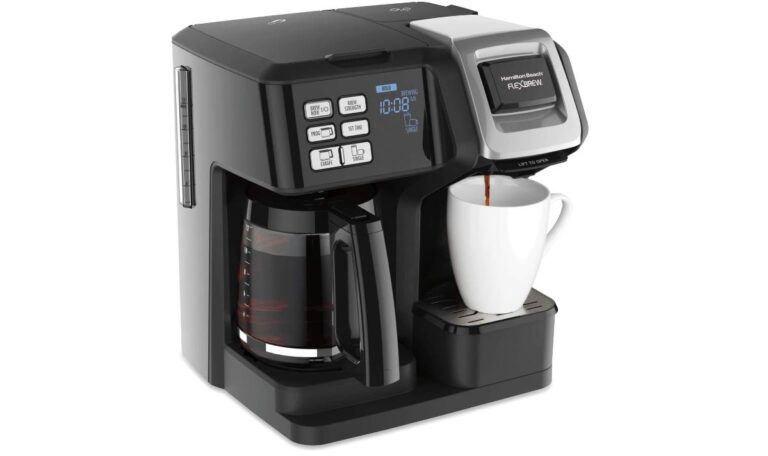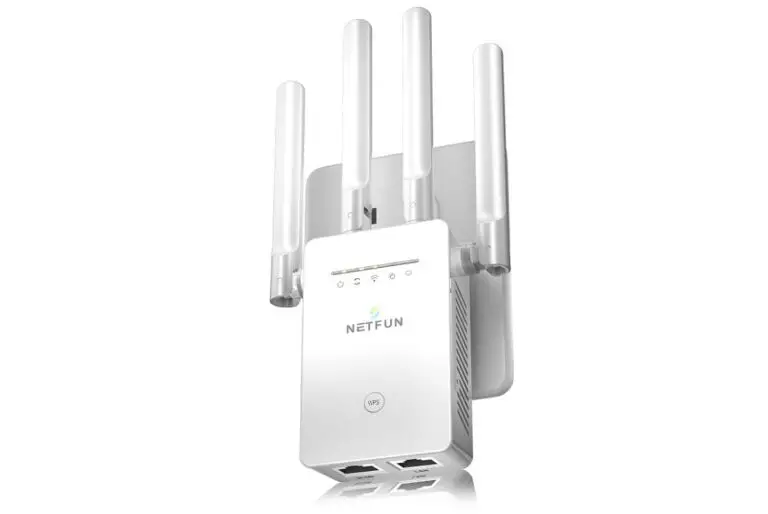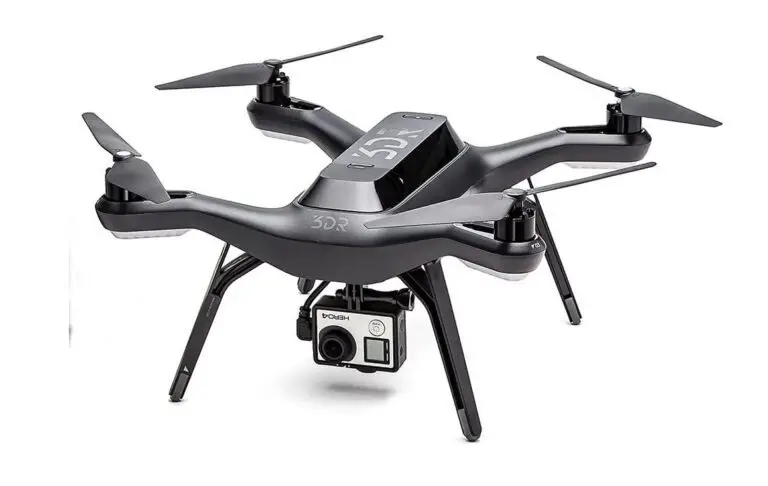Best WiFi Card for PC Reviews and Guide
Introduction
For dedicated PC gamers, a wireless connection used to be a no-no. When compared to a wired ethernet connection, even the best WiFi card for PC would be hampered by poor connection quality, frequent dropouts, and slow speeds. The concept that a wireless connection is necessarily bad is soon becoming obsolete as routers and WiFi technology improve.
WiFi 5 (802.11ac) has shown to be stable enough for even the most demanding online gaming for years. Furthermore, the latest WiFi 6 standard (802.11ax) has enough throughput to put older cable connections to the test. While ethernet is still the easiest and most cost-effective choice, most customers now choose WiFi.
The major qualities to look for when selecting the best wifi cards for your needs are listed below.
Bandwidth:
Bandwidth is the speed of data transfer measured in megabits per second (Mbps).
A speed of 300 Mbps would be more than adequate for the average user. But, if you regularly stream 8K content or are a serious gamer, then we would recommend you to go with a speed of 1,000 Mbps.
Signal Range:
If you want to use it for home networking, you’ll need 1,700 square feet of coverage. However, if you are utilizing it for work purposes or if you live in a large home, a covering of 3,000 sq. ft. is preferable. Anything less will not fulfill the aim of establishing a wireless connection.
OS Compatibility:
Wifi cards are only compatible with certain operating systems.
You won’t have any issues if you’re using Windows 10. Because the majority of wifi cards are compatible with the Windows 10 operating system. Your options will be limited if you use other operating systems, such as Linux or Chrome. You’ll have to look a little harder to find a wifi card that fulfills your requirements.
To make your decision easier, we’ve compiled a list of the Best WiFi Cards and written extensive reviews for each. Aside from this, there are a few more things to consider while purchasing a wifi card. A comprehensive list of such considerations may be seen in the article’s “Buying Guide” section.
Best WiFi Card for PC of 2023
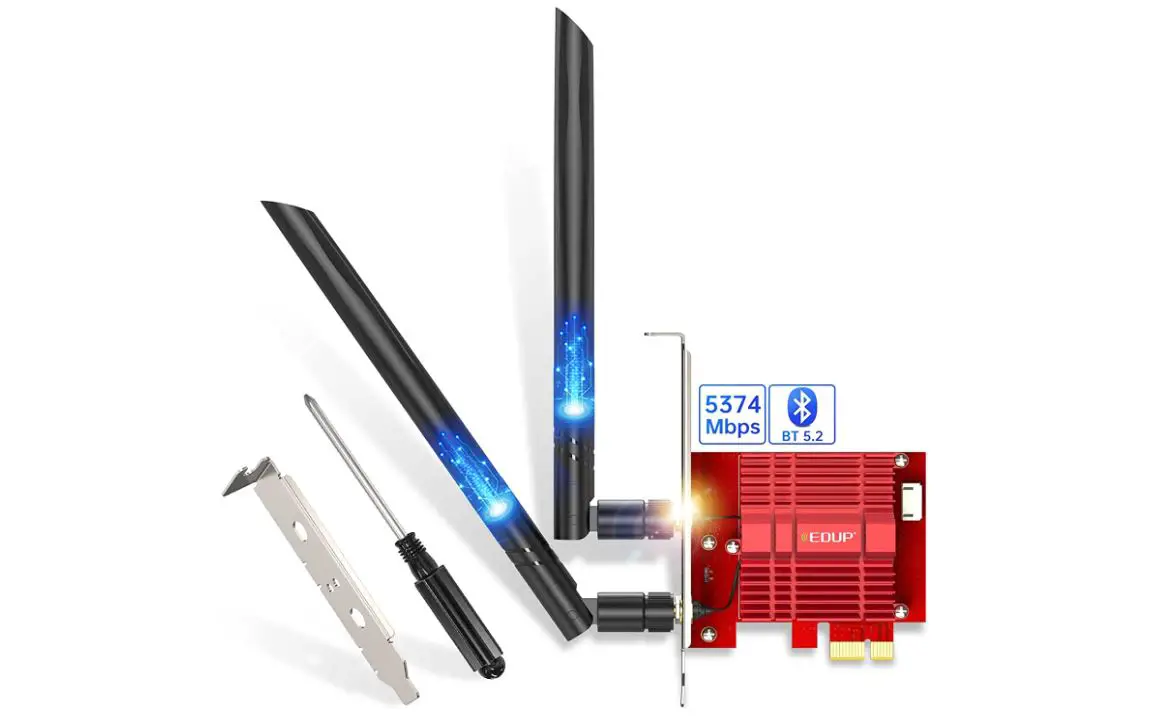

EDUP Store PCIe WiFi Card for PC
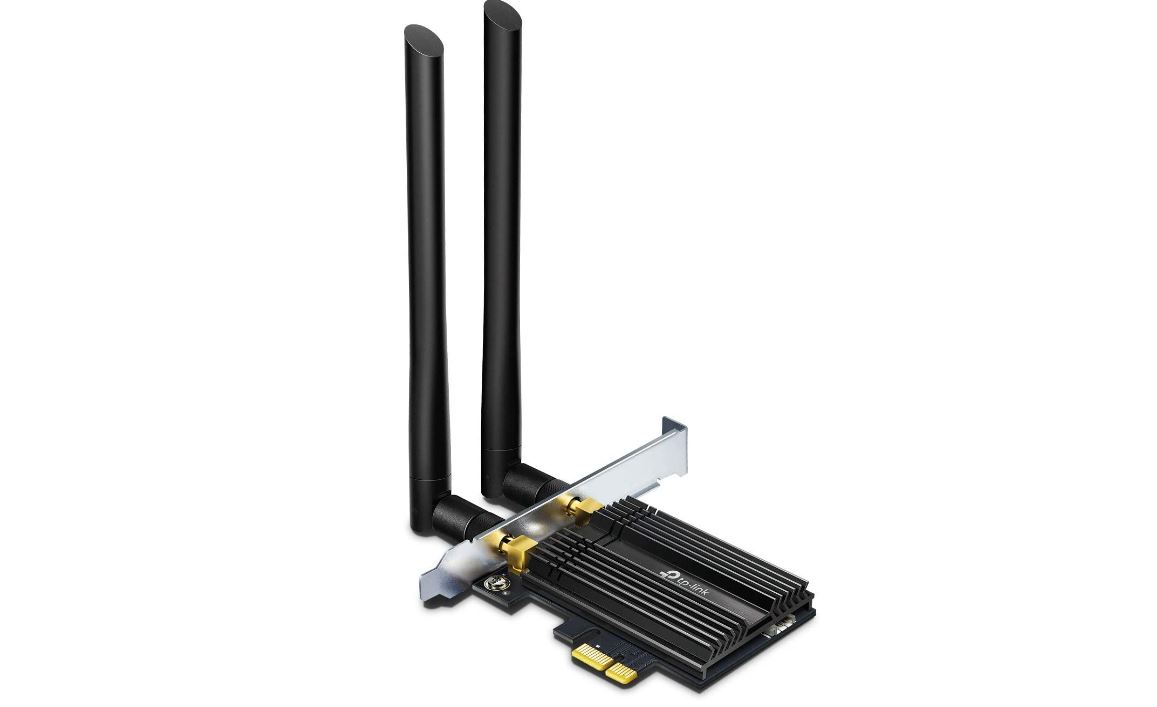

TP-Link Dual-Band WiFi Card for PC
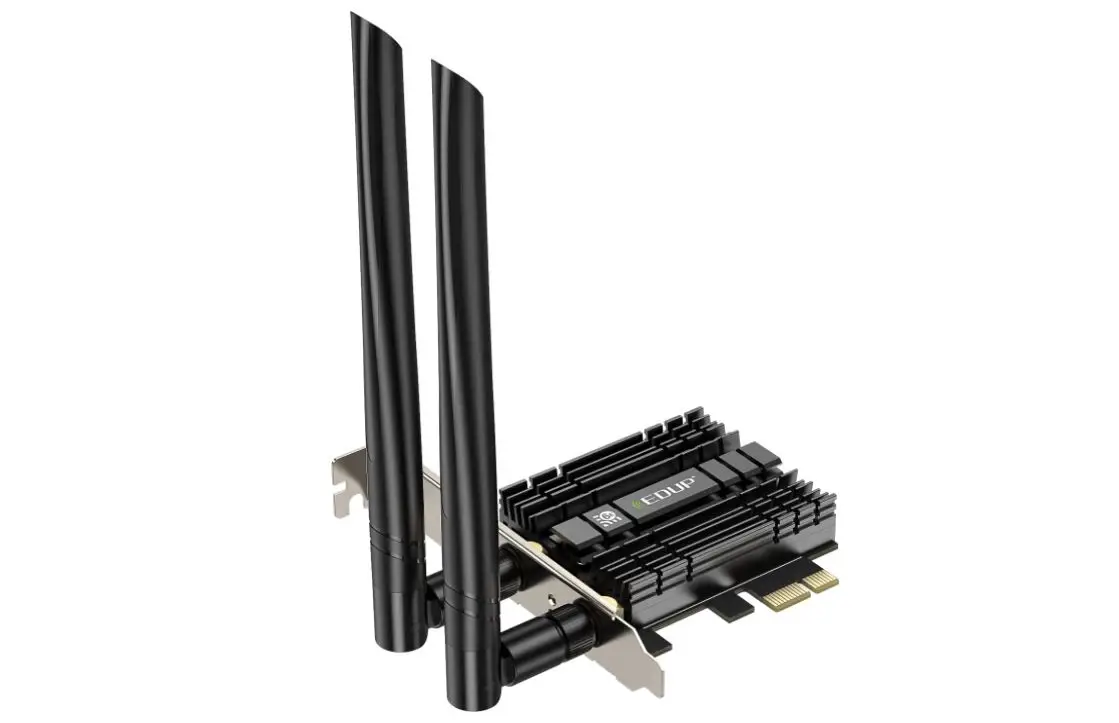

EDUP Tri-Band Wi-Fi Card for PC
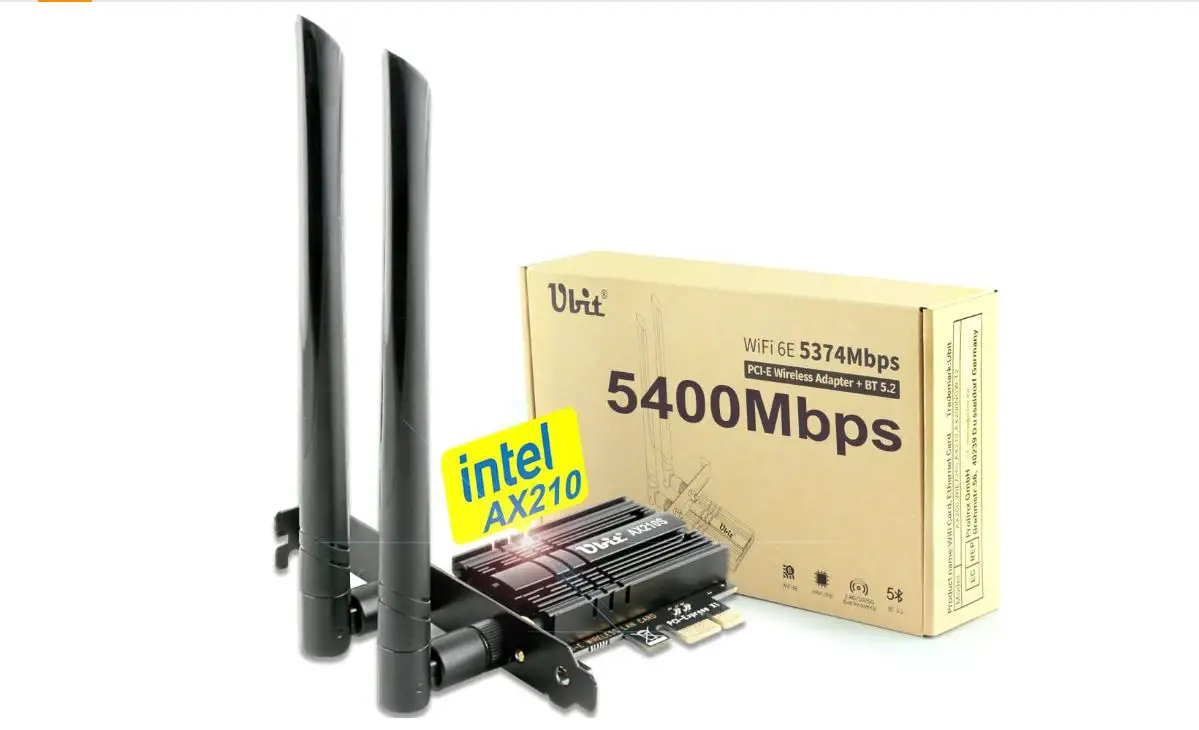

Ubit Dual-Band WiFi Card
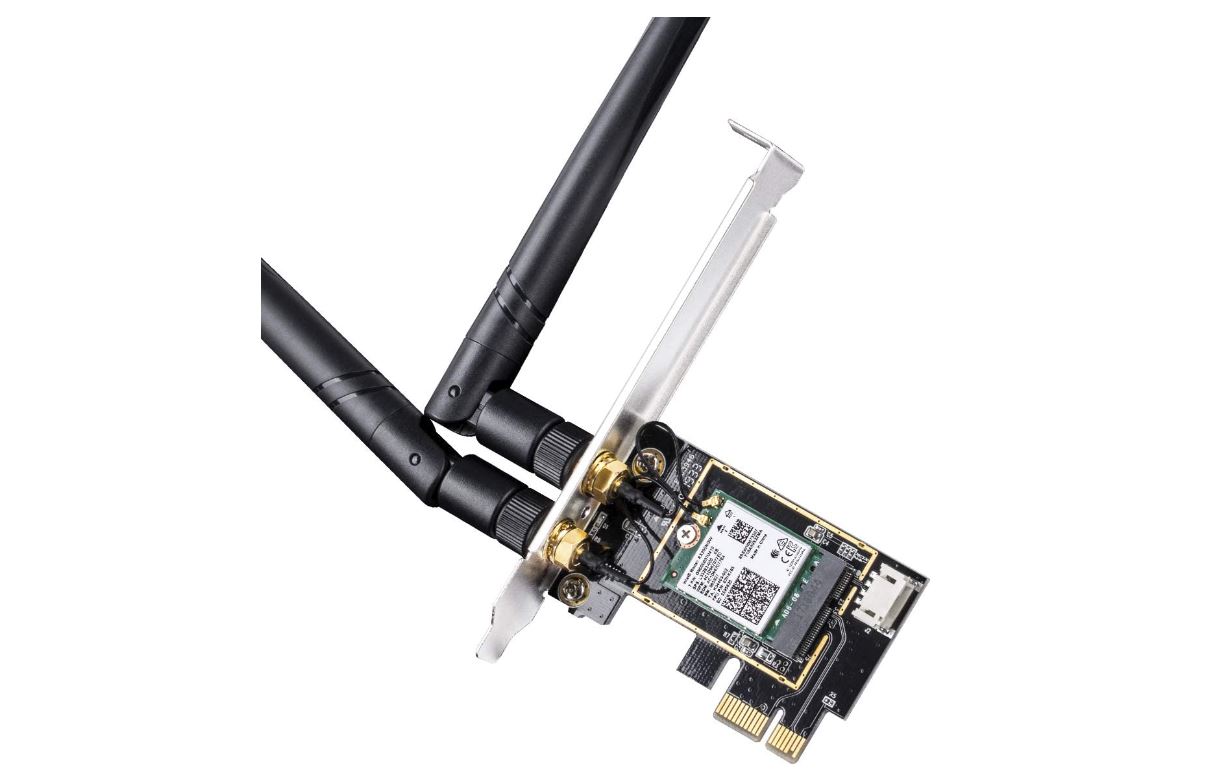

Cudy Dual-Band WiFi Card


Despite being a lesser-known brand, EDUP produces some of the highest-quality goods, such as WiFi cards.
WiFi 6 technology is built into the EDUP PCIe WiFi card. It is compatible with the Windows 10 operating system for desktop computers.
It has the ability to support both AX MU-MIMO and OFDMA technology. When you use this WiFi card, the WiFi speed can be increased to 3000Mpbs.
Two 6dBi high-gain dual-band antennas are included with this WiFi network card. It has a dual-band 2.4GHz/5.8GHz chipset. It’s ideal for 4K ultra-high-definition video streaming and online gaming. It aids in the pairing of earbuds, Bluetooth devices, mice, and other Bluetooth devices.
When compared to Ac network cards, it can dramatically boost internet speed and network quality. When linked to a router, it may simultaneously transfer data to three devices.


There is no need to introduce TP-Link. It is one of the most well-known manufacturers of wireless network equipment. The routers from this company are regarded as some of the best on the market.
In order to provide a maximum speed of 2402 Mbps, the brand employed the AX3000 standard in this wifi card. The OFDMA and MU-MIMO technologies will also help to reduce latency. You’ll have a smooth gaming experience and be able to view HD videos without lags.
Bluetooth version 5.0 is used by the wifi card. With 2x quicker speeds and a 4x longer range, you may connect your PC to other Bluetooth-enabled devices.
You get two antennae with this wifi card to improve the signal and ensure a stable connection.
To protect your data, TP-Link has implemented the newest WPA3 encryption technology. There is no need to be concerned about malware.
One of the significant disadvantages is that this wifi card is only compatible with Windows 10 64-bit.


EDUP has built a solid reputation for creating cutting-edge wireless networking solutions with enhanced capabilities.
The EDUP tri-band wifi 6E card lives up to its name, offering some of the most advanced capabilities. To begin, it supports three frequencies: 2.4GHz, 5GHz, and 6GHz. Additionally, it has a peak speed of up to 3000 Mbps. This speed is sufficient for online gaming and buffer-free 8K video streaming.
The wifi card includes the latest Bluetooth 5.2 version, which provides a 4x signal range. You can easily receive the signal even in thick or congested areas.
It also features two 6dBi antennas that will receive and focus the signal on the device.
This card can be inserted into any of the PCI-e slots. It should not be plugged into a PCI slot. The wifi card is only compatible with Windows 10 64-bit in terms of the operating system. It is incompatible with all other operating systems.


Another small company that makes dependable network adapters and computer peripherals are Ubit. HDMI adapters, USB adapters, and networking cards are among the company’s offerings.
Most of the features of Ubit’s dual-band wifi card are similar to those of Ziyituod’s wifi card. It employs the same 802.11ax technology to deliver up to 3000 Mbps data transfer speeds. The wifi card has a data transfer rate of up to 4 times. Even in a congested setting, you may enjoy smooth streaming of high-resolution media with this.
Bluetooth version 5.1 enables you to maintain a stable connection between your computer and other Bluetooth-enabled devices such as headphones, speakers, and keyboards.
It includes two antennas to boost signal strength. Any of the PCI-e slots on your desktop can be used to connect it to your computer.
With powerful 64-bit and 128-bit WEP encryption, Ubit has really upped the ante when it comes to safeguarding your wireless connection. You may surf without worrying about malware or hacks.
This wifi card is compatible with Linux and Chrome OS in addition to the conventional Windows 10 64-bit OS.


Cudy is a Chinese firm with operations in nine countries, including the United States. The business provides network and smart home products with the goal of providing high-quality items at low prices.
This, like the majority of the other wi-fi cards on our list, has a dual-band frequency. With the 2.4GHz frequency and a larger range, you can reach a maximum speed of 574 Mbps. The wi-fi card will instantly switch to the 5GHz frequency and give rates of up to 2402 Mbps if you are streaming 4K material or playing online games.
Cudy has reduced lag by up to 75% using OFDMA technology in the wi-fi card. You will have a gaming experience that is ultra-responsive and fluid. Furthermore, you receive 3x the speed of a typical wi-fi network.
In comparison to Bluetooth 4.2, Bluetooth 5.0 offers 2x quicker rates and a 4x greater range. As a result, when utilizing a Bluetooth controller to play games, you don’t have to sit closer to the desktop. In addition, the Wi-Fi card works with the 4.2 version.
The wi-fi card includes two antennae, each with a 5 dBi gain (decibel relative to isotope). Even in densely populated areas, you will receive clear signals.
For added protection, it employs the standard WPA3 encryption mechanism. To safeguard your network from wireless hacking, you can create encrypted passwords.
The wi-fi card must be inserted into the PCI-e x 1 slot. Your desktop will only operate with the wi-fi card if it is running Windows 10 64-bit.
What Is a Wi-Fi Card?
A Wi-Fi card is a tiny card with an antenna that you connect to your computer to receive the Wi-Fi signal from your network.
Types of Wifi Cards
Wifi cards come in a variety of shapes and sizes, and they connect to your computer in a variety of ways.
The PCIe Wifi Adapter Card, the M.2 Wifi Adapter Card, and the USB Wifi Adapter, which is also the simplest to install because it does not require opening up your PC.
Both the PCIe and M.2 Wireless Adapter Cards must be inserted into a slot on your motherboard. The PCIe Card is installed in its designated PCIe Slot, and if you purchase an M.2 Wifi Card, it is installed in a free M.2 Slot.
These cards come in a variety of sizes and forms, but the basic concept remains the same. This isn’t to say that all Wi-Fi cards are created equal.
The Wi-Fi network standard that your chosen Wi-Fi card supports is the most important factor to consider.
Wi-Fi has evolved throughout time, providing faster and more stable networks. To take advantage of these advancements, you’ll need a Wi-Fi receiver (i.e., Wi-Fi card) that is certified to function with these many iterations.
Wi-Fi 6E (802.11ax) is the most sophisticated Wi-Fi version currently available as of this writing.
If you’re in the market for a new Wi-Fi card, make sure the one you choose supports the standard.
Why Do You Need a Wi-Fi Card?
Isn’t it rather straightforward? To use Wi-Fi, you’ll need a Wi-Fi card.
But there are other ways to connect to the internet; what makes a Wi-Fi card unique?
The main benefit of a Wi-Fi card is that it provides the best wireless Wi-Fi access as compared to using an ethernet cable or a Wi-Fi USB dongle.
Some will argue that using a cable is the best way to connect to the internet, and although I don’t necessarily disagree, the truth is that most people don’t want to deal with wires.
As a result, Wi-Fi cards provide a nice compromise between the quickest speeds and lowest latency (wired ethernet) and slow wireless speeds and large latencies (wireless) (Wi-Fi USB dongle).
What’s the Difference Between a Wi-Fi Card and a Wi-Fi Dongle?
Wi-Fi cards are larger and more difficult to install since they require you to open up your computer, but they provide faster bandwidth, lower latency, and better stability.
Wi-Fi dongles are smaller and easier to install, but they don’t provide the best speeds, latency, or stability.
If Wi-Fi is more of a long-term answer for you, meaning you want to utilize it as your primary mode of connectivity, Wi-Fi cards are the best option.
Wi-Fi dongles, on the other hand, are ideal if you only need to connect a non-Wi-Fi capable machine to a network for a short time or only need Wi-Fi connectivity on a regular basis.
Buying Guide for the Best WiFi Card
When purchasing a wifi card, make sure it meets your specific requirements. The following is a list of features to look for before buying the best wifi card.
Single Band Vs. Dual Band
A dual-band wifi card will support both bands, i.e. 2.4GHz and 5GHz. It provides faster speeds and better flexibility. Besides, it can automatically switch between the bands depending on the speed it receives.
Even though your home network router does not support dual bands, you can get a dual-band wifi card just to be on the safer side. You do not have to upgrade to a new wifi card in the future if you change your router.
Number of Antennas
The signal range and data transfer speed are determined by the number of antennas. To put it another way, the bigger the number of antennas, the faster the data transfer speed.
Some wifi cards have four antennas, but the majority only have two.
You must consider not only the number but also the type of antennas. Some antennas will be larger in size than others. Some of the antennas can also be rotated. By rotating the antennae, you will be able to better receive the signal, which will boost the data transfer speed.
Hardware Interface
The hardware interface has nothing to do with the performance of the wifi card, but it does have something to do with how you install it.
If your wifi card has a USB interface, connecting it to your computer is simple. Simply insert it into a USB port on your computer and follow the on-screen instructions.
If your wifi card has a PCIe interface, you’ll need to connect it to the back of your desktop processor. There are also numerous PCIe variants, such as PCIe x 1, PCIe x 4, and PCIe x 8. You must check that the wifi card’s PCIe interface is comparable to the PCIe slot on your desktop CPU.
Cooling Method
When wifi cards work too hard, they become heated, just like any other electronic machine. If you use a strong wifi card, it will undoubtedly become hotter, affecting its performance.
So, while purchasing a wifi card, be sure to look at the cooling mechanism. Having a good cooling system will ensure that the card does not overheat. Aluminum coolers are not only good at reducing heat, but they are also inexpensive.
Bluetooth Version
When purchasing a wifi card, make sure it has the most recent Bluetooth version, which is Bluetooth 5.2. The most recent versions will have increased range and transfer speeds.
As a result, you may link your PC to other Bluetooth devices including Bluetooth speakers, headphones, and smartphones with ease.
Backward compatibility is always guaranteed with Bluetooth connections. You will be able to connect the other Bluetooth devices even if they are running on older versions.
Encryption Type
Wireless data transmissions are insecure compared to conventional data transmissions. If you transfer data wirelessly, your desktop is accessible to hackers. Fortunately, wifi card manufacturers employ modern security techniques to secure your computer from data theft and hacking.
Examine the wifi card’s security technology to see if it can safeguard your computer. WPA3 is the most recent advancement in this subject.
Conclusion
The EDUP Tri-Band Wi-Fi Card is great for anyone seeking a wifi card that supports super-fast connections and triple-band frequencies.
Check out the Ubit Dual-Band Wi-Fi Card if you want something that works with Linux and Chrome OS.
If you’re on a tight budget, the Cudy Dual-Band Wi-Fi Card can suffice.
If you have any further questions or concerns, please let us know in the comments area. Our team will assist you. In the comments section, you may also share your thoughts and opinions.

